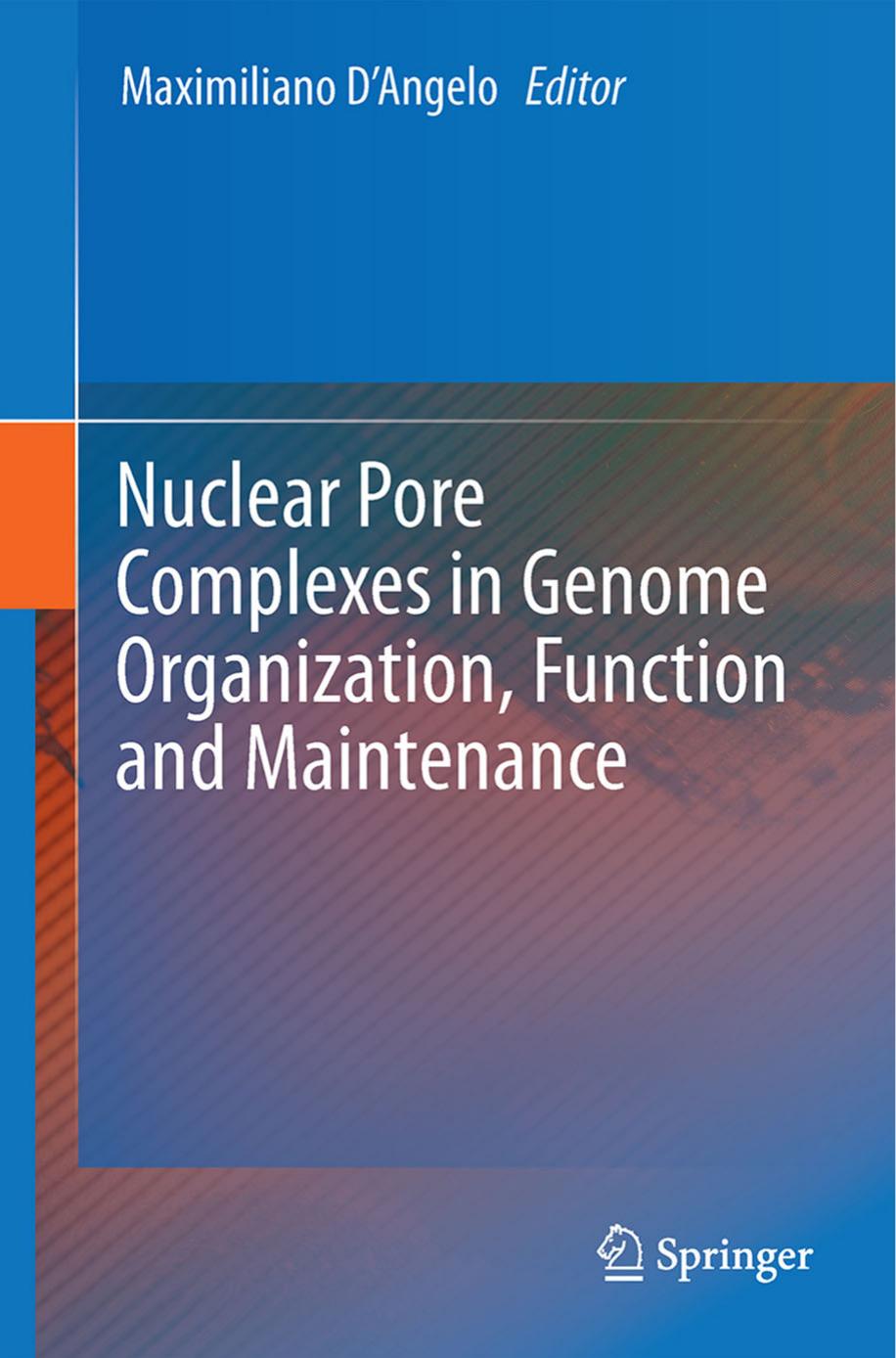Nuclear Pore Complexes in Genome Organization, Function and Maintenance by Maximiliano D’Angelo

Author:Maximiliano D’Angelo
Language: eng
Format: epub, pdf
Publisher: Springer International Publishing, Cham
5.3.3 Cytoplasmic Nups in Immune Response and Import of NF-κB
One of the initial demonstrations of the functional specificity of individual Nups was the discovery of the specific involvement of Nup88, the fly gene for which is termed members only (mbo), in Drosophila immune function. Nup88 expression was found to be tissue-specific in fly larvae: enriched in imaginal discs, trachea, CNS, and fat body, but low in epidermis, muscles and gut (Uv et al. 2000). While mbo loss-of-function mutants did not present obvious defects in nuclear morphology, NPC structure, mRNA export, or nuclear localization of multiple endogenous proteins, a specific defect in nuclear import of the Drosophila transcription factors Dorsal and Dif, homologues of the NF-κB/Rel transcription factors, was identified in mbo mutant cells (Uv et al. 2000).
NF-κB/Rel transcription factors are critical for response to immune insults in metazoan organisms. Upon immune activation, cytoplasmic inhibitors of NF-κB factors are degraded, physically releasing them and allowing for their translocation into the nucleus (Mitchell et al. 2016). Here NF-κB factors interact with chromatin and promote expression of target immune response genes, and successful nuclear translocation of these transcription factors during immune response is crucial for the expression of downstream immune response. When Nup88 mutant larvae were infected with bacteria, Dorsal and Dif NF-κB/Rel transcription factors were not effectively transported into the nuclei of cells within the fat body, which is the primary organ for anti-bacterial response, yet nucleocytoplasmic transport of several other tested proteins and mRNA products was completely unaffected in these mutants. Accordingly, the normally observed dramatic up-regulation of target antimicrobial peptide genes drosomycin and diptericin is completely abolished in the Nup88 mutant background (Uv et al. 2000).
Further exploration has led to a likely mechanism, and implicated another NPC component Nup214, in this selective transport of NF-κB factors. Localization of Dorsal within the cell has been shown to rely directly on the nuclear export factor CRM1. In salivary gland cells of CRM1 mutant flies, or S2 cells with CRM1 activity chemically inhibited, the nuclear/cytoplasmic ratio of Dorsal protein is dramatically increased compared to wild type, demonstrating a clear defect in its nuclear export (Roth et al. 2003). CRM1, Nup214, and Nup88 appear to interact directly, and loss of either Nup88 or Nup214 induces re-localization of CRM1 from the nuclear periphery to the nuclear interior (Xylourgidis et al. 2006), suggesting that the Nup88/Nup214 complex normally sequesters CRM1 at the periphery and prevents it from performing its export functions. Without being anchored to the periphery, CRM1 is free to export Dorsal, Dif, and other protein cargo out of nuclei unabated, inhibiting their ability to act as transcription factors and induce expression of antimicrobial peptides. The specificity in transport targets in this system is thought to be accomplished by the previously demonstrated affinity of CRM1 for leucine-rich nuclear export sequences, including those possessed by Dorsal (Xylourgidis et al. 2006). These findings have introduced a mechanistic paradigm for how a specific gene expression program and the immune response can be directly influenced by transport activities of individual Nups.
Download
Nuclear Pore Complexes in Genome Organization, Function and Maintenance by Maximiliano D’Angelo.pdf
This site does not store any files on its server. We only index and link to content provided by other sites. Please contact the content providers to delete copyright contents if any and email us, we'll remove relevant links or contents immediately.
| Cell Biology | Developmental Biology |
| Entomology | Marine Biology |
| Microbiology | Molecular Biology |
| Biostatistics |
Sapiens: A Brief History of Humankind by Yuval Noah Harari(14210)
The Tidewater Tales by John Barth(12595)
Mastermind: How to Think Like Sherlock Holmes by Maria Konnikova(7195)
Do No Harm Stories of Life, Death and Brain Surgery by Henry Marsh(6875)
The Thirst by Nesbo Jo(6808)
Why We Sleep: Unlocking the Power of Sleep and Dreams by Matthew Walker(6597)
Life 3.0: Being Human in the Age of Artificial Intelligence by Tegmark Max(5446)
Sapiens by Yuval Noah Harari(5281)
The Longevity Diet by Valter Longo(5006)
The Body: A Guide for Occupants by Bill Bryson(4952)
The Rules Do Not Apply by Ariel Levy(4822)
The Immortal Life of Henrietta Lacks by Rebecca Skloot(4500)
Animal Frequency by Melissa Alvarez(4382)
Why We Sleep by Matthew Walker(4341)
The Hacking of the American Mind by Robert H. Lustig(4302)
Yoga Anatomy by Kaminoff Leslie(4289)
All Creatures Great and Small by James Herriot(4211)
Double Down (Diary of a Wimpy Kid Book 11) by Jeff Kinney(4177)
Barron's AP Biology by Goldberg M.S. Deborah T(4080)
